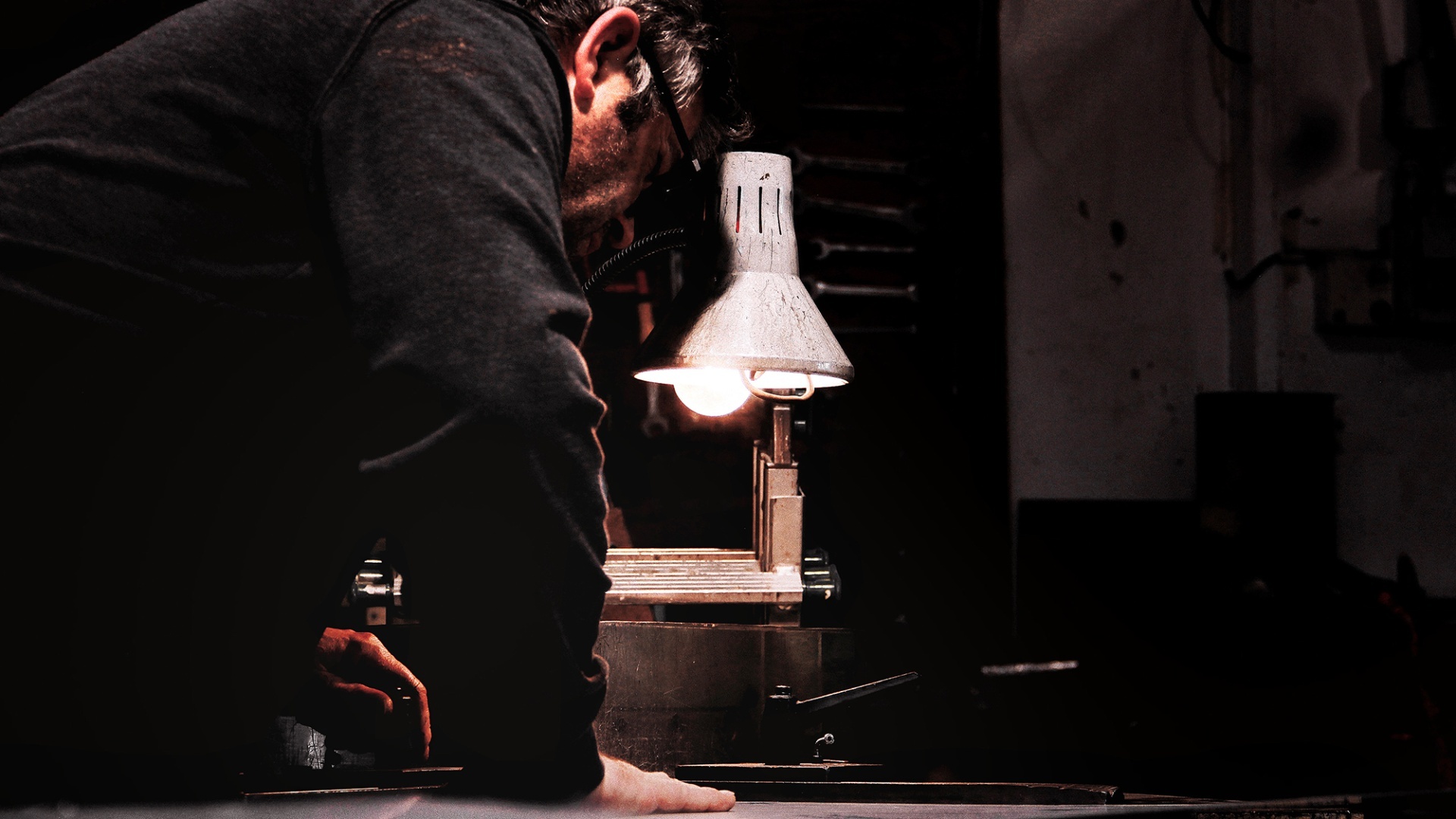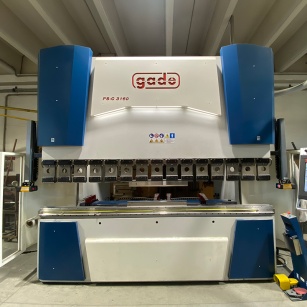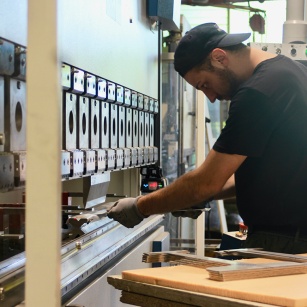Press Brakes
Bending is a process aimed at simplifying the deformation of a sheet metal piece. In the processing cycle, it follows cutting. The piece is placed on a die with a V-shaped opening. A wedge-shaped punch accompanies the piece into the V-shaped opening and bends it at a programmed angle.
From simpler pieces to more complex projects, metal bending is fundamental in the production of items commonly used in everyday life: car claddings, furnishing accessories, as well as electronic products, and many other sectors.
Among bending techniques, the most requested is the V-bend and can be performed in 3 ways:
Air bending: the punch pushes the sheet into a concave V-shaped die where the bending angle varies based on the depth reached by the punch. It is a simple technique suitable for thicker gauges.
Coining: unlike air bending, the punch and die come into complete contact. The punch, therefore, pushes the sheet all the way into the die, causing a precise bend with no possibility of elastic rebound. Coining is mainly used for 90° angles with thin sheets and requires the use of specific tools for each angle and shape.
Crushed: a process divided into two parts, a pre-bend in the air at 26°-35°, and subsequently, a total or partial bending depending on the applied force. This type of bend ensures greater rigidity of the sheet and a non-sharp edge finish. Generally, crushing is carried out on sheets not exceeding 3 mm in thickness.



